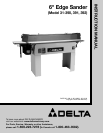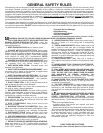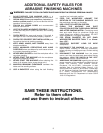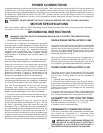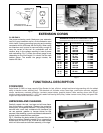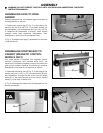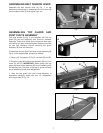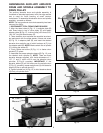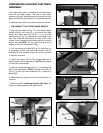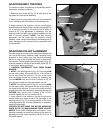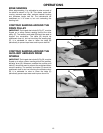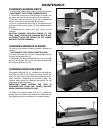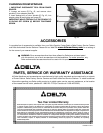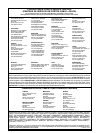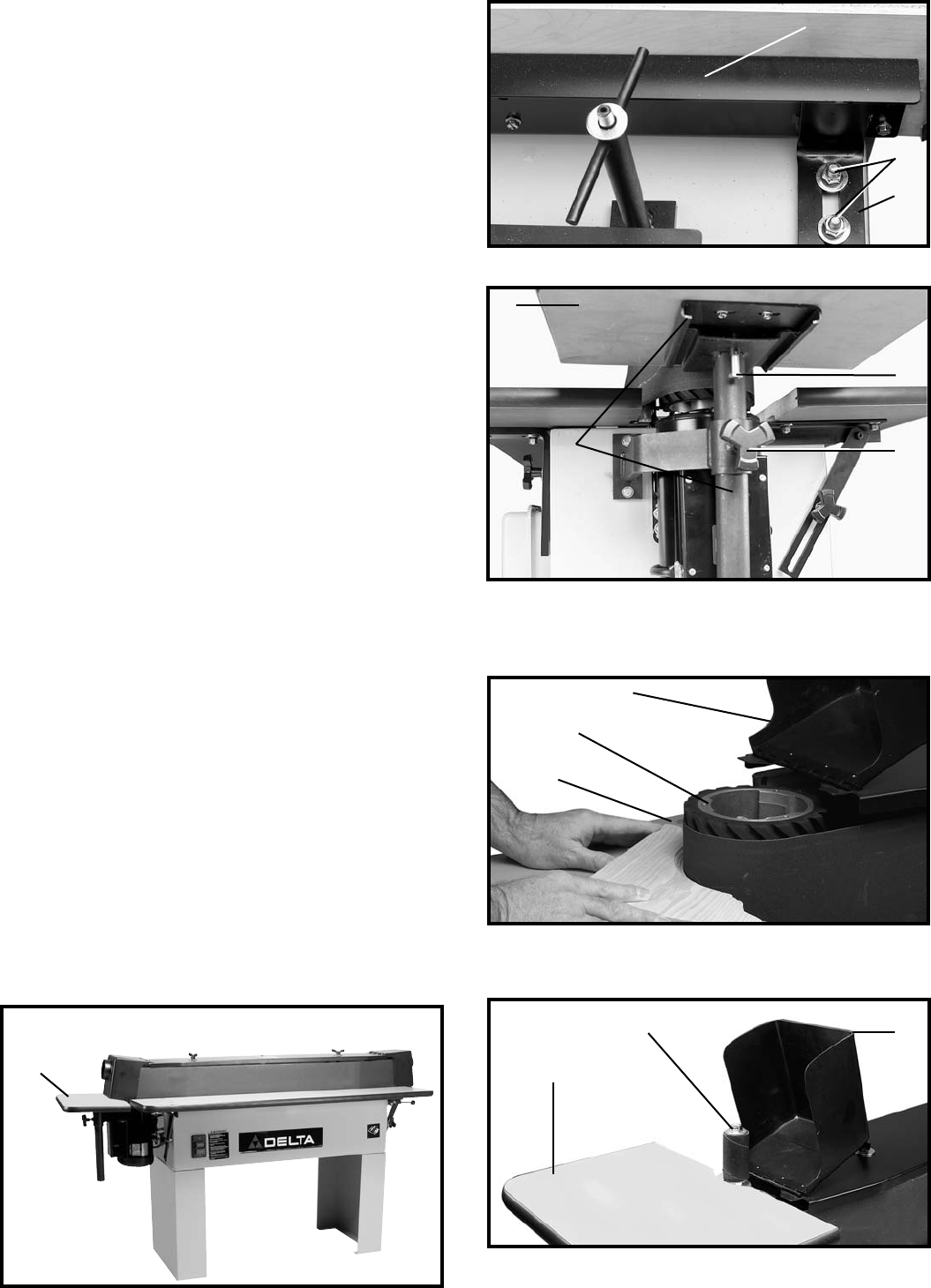
ADJUSTING LONG PLATEN
To adjust the long platen when sanding on the straight
table:
1. DISCONNECT TOOL FROM POWER SOURCE.
2. Remove the top guard and dust chute assembly.
3. Loosen two hex nuts (A) Fig.29 holding brackets (B) at
each end of the machine, and move platen (C) in or out
as needed.
IMPORTANT: MAKE CERTAIN THE LONG STRAIGHT
PLATEN IS NOT MOVED TOO FAR FORWARD SO
THAT THE TABLE INTERFERES WITH THE SANDING
BELT.
ADJUSTING AUXILIARY END TABLE
The auxiliary end table can be adjusted both vertically
and horizontally to accommodate contour sanding
operations around the drive pulley and smaller diameter
sanding operations around the drum spindles. The end
table can easily be adjusted for use as an extra work
support.
1. DISCONNECT TOOL FROM POWER SOURCE.
2. To adjust the end table vertically, loosen lock knob (A)
Fig. 30, and move the table assembly (B) up or down as
necessary. Tighten lock knob (A) after adjustments are
made.
3. To adjust the table horizontally, loosen locking screw
(C) Fig. 30, and move table (D) in or out as necessary.
Tighten locking screw (C) after adjustments are made.
4. Fig.31 illustrates the auxiliary end table (D) in position
for contour sanding around the drive pulley (E).
IMPORTANT: The dust chute (G) must be in the up
position as shown.
5. Position the table (D) Fig. 31, as close as possible to
the drive pulley (E) without contacting the sanding belt.
6. Fig. 32 illustrates the auxiliary end table (D) pos-
itioned for contour sanding around the auxiliary abrasive
drum and spindle assembly (H). IMPORTANT: The dust
chute (G) must be in the up position as shown.
7. When not in use, the auxiliary end table (D) Fig. 33, can
be positioned at its lowest adjustment level at the end of
the machine as shown.
11
Fig. 29
Fig. 30
Fig. 31
Fig. 32
Fig. 33
C
A
B
D
C
B
A
G
H
D
D
D
E
G



